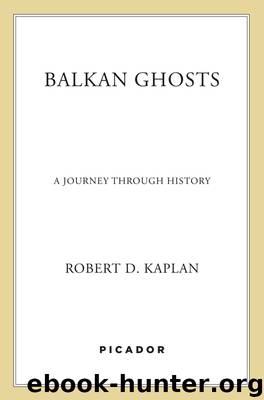Balkan Ghosts by Robert D. Kaplan

Author:Robert D. Kaplan
Language: eng
Format: epub
Publisher: Picador
CHAPTER NINE
Transylvanian Voices
It is on the plain that the regime really sank its teeth into the population. As in the Middle Ages, the mountains provided a measure of defense. Crossing westward over the Carpathians from Bucovina, I saw few signs of collectivization. The landscape was defined more by wood and natural stone than by concrete and scrap iron. I walked for long stretches downhill and even rode in the back of a leiterwagen for a few minutes, before realizing that I could make faster progress on foot. Only occasionally did a car pass on the road. I knew I was catching a glimpse of the Romanian countryside in a deliciously exciting moment of history: in the aftermath of a revolution, enabling me to travel freely, but before the process of modernization had begun.
Tirgu Mures was the first town in Transylvania I stopped at. I arrived in the morning, when the sun was burning off the mist from the surrounding hills, revealing the outlines of steep roofs, spires, leaden domes, and statues around a spacious green expanse called the Square of the Roses, lined with baroque and gothic facades. Unlike in Jassy, there were Catholic churches; and not only Romanian, but Hungarian, too—a tongue that conjured up Central Europe and not the Balkans—was being spoken in the streets. Surveying the square, I found an intimacy and a lack of strangeness that derived from a strong and generally uninterrupted process of cultural development, symbolized by the verticality of the architecture. Here was a coffeehouse culture, even though there had been no coffee for many years. I was back in Central Europe, albeit at the very rear door.
In the West, the very word Transylvania conjures up images of howling wolves, midnight thunderstorms, evil-looking peasants, and the thick, courtly accent of Count Dracula, as portrayed by Bela Lugosi. In fact, however, the historical figure on whom Dracula is based, “Vlad the Impaler,” had his castle on the plain of Wallachia. Stoker’s story, meanwhile, falls more into the realm of Bucovina and Moldavia than of Transylvania.
I am not being pedantic. Wallachia, Bucovina, and Moldavia belong to the East: the world of Orthodox Christianity, of peasant superstitions and mystic ecstasies. But Transylvania is, in essence, part of the same world that has had nothing but derision for the East: the West.
In the impassioned view of historian John Lukacs, Transylvania’s Western identity is “the key to its history” and its “human fauna.” Lukacs pleads:
Transylvania had its high Middle Ages, cathedrals, Cistercians, a whiff of the Renaissance, its Baroque, its Enlightenment—the historical ages that made Europe … that did not exist in Russia or in Rumania, Moldavia, Oltenia, Wallachia, Bessarabia, Bulgaria, Serbia, Macedonia, Albania, Thrace, Greece, the Ukraine.
As Lukacs and others have pointed out, the Turks conquered all of the Balkans and half of Hungary in the Middle Ages, but they did not conquer Transylvania. While the plain of Athens below the Parthenon—not to mention Moldavia and Wallachia—dozed under an Oriental, Ottoman sleep, Transylvania was proclaiming the Enlightenment, with freedom and equality for both Catholics and Protestants.
Download
This site does not store any files on its server. We only index and link to content provided by other sites. Please contact the content providers to delete copyright contents if any and email us, we'll remove relevant links or contents immediately.
Spell It Out by David Crystal(36084)
Underground: A Human History of the Worlds Beneath Our Feet by Will Hunt(12052)
A Year in the Merde by Stephen Clarke(5366)
Venice by Jan Morris(2546)
Claridge's: The Cookbook by Nail Martyn & Erickson Meredith(2381)
My Paris Kitchen: Recipes and Stories by Lebovitz David(2269)
A TIME OF GIFTS by Patrick Leigh Fermor(2173)
The Plantagenets by Dan Jones(2062)
Welcome to the Goddamn Ice Cube by Blair Braverman(2015)
The Finnish Way by Katja Pantzar(1962)
Top 10 Prague (EYEWITNESS TOP 10 TRAVEL GUIDES) by DK(1957)
From Russia with Lunch by David Smiedt(1947)
Bang Poland: How To Make Love With Polish Girls In Poland by Roosh V(1945)
The Isle of Mull by Terry Marsh(1917)
A TIME TO KEEP SILENCE by Patrick Leigh Fermor(1880)
Rick Steves London 2018 by Rick Steves & Gene Openshaw(1842)
Insight Guides Experience Tokyo by Insight Guides(1834)
A Taste of Paris by David Downie(1831)
Merde in Europe by Stephen Clarke(1739)
